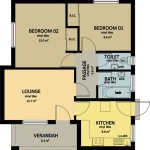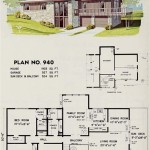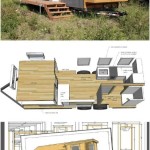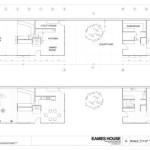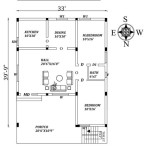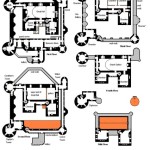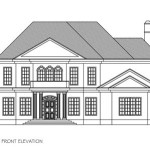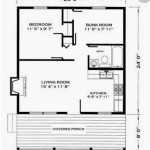Modern Mountain View Home Plans: Blending Nature and Contemporary Design
Modern mountain view home plans represent a unique convergence of architectural styles, catering to homeowners seeking a harmonious blend of contemporary design and the natural splendor of mountainous landscapes. These plans prioritize expansive views, integrate seamlessly with the surrounding environment, and often incorporate sustainable building practices. The result is a living space that feels both luxurious and deeply connected to its natural setting.
The design of modern mountain view homes requires careful consideration of several crucial factors, including the topography of the land, local climate conditions, and the orientation of the property to maximize views. Architects and designers utilize various strategies to address these challenges, such as incorporating strategically placed windows, open floor plans, and outdoor living spaces. The goal is to create a home that is not only aesthetically pleasing but also functional, energy-efficient, and resilient to the elements.
Maximizing Views and Natural Light
A defining characteristic of modern mountain view home plans is the emphasis on maximizing panoramic views. Large, expansive windows, often floor-to-ceiling, are strategically placed to capture the most breathtaking vistas. These windows not only provide stunning views but also allow ample natural light to flood the interior spaces, creating a bright and airy ambiance. The use of low-emissivity (low-E) glass is common to minimize heat gain in the summer and heat loss in the winter, contributing to energy efficiency. Skylights are also frequently incorporated to supplement natural light and further enhance the connection with the outdoors.
Open floor plans are another key element in maximizing views and natural light. These layouts eliminate unnecessary walls, creating a seamless flow between living spaces and allowing natural light to penetrate deeper into the home. The integration of the kitchen, dining area, and living room into a single, unified space creates a sense of spaciousness and fosters social interaction. This design approach also allows for unobstructed views from multiple vantage points within the home.
Outdoor living spaces, such as decks, patios, and balconies, are seamlessly integrated with the interior spaces to extend the living area and provide opportunities to enjoy the surrounding natural environment. These outdoor spaces often feature comfortable seating areas, outdoor kitchens, and fireplaces, creating inviting spaces for relaxation and entertainment. Careful consideration is given to the orientation of these spaces to maximize views and provide protection from the elements.
Furthermore, the placement of windows and outdoor areas considers the path of the sun throughout the day. Architects aim to capture morning light in bedrooms and living areas while minimizing exposure to harsh afternoon sun in areas prone to overheating. Overhangs and awnings are used to further control sunlight and provide shade during the hottest months.
Integrating with the Natural Environment
Modern mountain view home plans prioritize seamless integration with the surrounding natural environment. This is achieved through various design strategies, including the use of natural materials, the incorporation of landscaping, and the careful consideration of the home's footprint. The goal is to create a home that feels like an extension of the landscape, blending harmoniously with its surroundings.
The use of natural materials, such as wood, stone, and glass, is prevalent in modern mountain view home design. These materials not only add warmth and texture to the interior and exterior spaces but also help to connect the home with the natural environment. Locally sourced materials are often preferred to minimize environmental impact and support local economies. The selection of materials also considers their durability and resistance to the elements, ensuring the long-term integrity of the home.
Landscaping plays a crucial role in integrating the home with its surroundings. Native plants are often used to create a natural and sustainable landscape that requires minimal maintenance and blends seamlessly with the existing vegetation. The landscaping is also designed to enhance privacy, provide shade, and attract local wildlife. Retaining walls and terracing are used to manage slopes and create usable outdoor spaces, while minimizing soil erosion and preserving the natural topography.
The footprint of the home is carefully considered to minimize its impact on the environment. Architects strive to design homes that are compact and efficient, minimizing the amount of land that is disturbed during construction. The orientation of the home is also carefully considered to maximize solar gain in the winter and minimize heat gain in the summer, contributing to energy efficiency. In some cases, the home is designed to follow the contours of the land, further minimizing its environmental impact.
Attention is also paid to preserving existing trees and vegetation. During the design process, efforts are made to identify and protect valuable trees and plants. The home is then designed to work around these existing features, preserving the natural character of the site. This approach not only minimizes environmental impact but also adds value and beauty to the property.
Sustainable Building Practices and Energy Efficiency
Sustainability is a core principle in the design and construction of modern mountain view homes. These homes often incorporate a variety of sustainable building practices and energy-efficient technologies to minimize their environmental impact and reduce operating costs. The focus is on creating homes that are not only beautiful and functional but also environmentally responsible.
Energy efficiency is a top priority. High-performance insulation, energy-efficient windows and doors, and advanced HVAC systems are used to minimize energy consumption. Solar panels are often integrated into the roof or ground-mounted to generate renewable energy. Smart home technology is used to optimize energy usage and control lighting, temperature, and appliances. Energy Star appliances are specified throughout the home to further reduce energy consumption.
Water conservation is another important consideration. Low-flow fixtures, such as toilets, showerheads, and faucets, are used to reduce water consumption. Rainwater harvesting systems are often installed to collect rainwater for irrigation and other non-potable uses. Drought-tolerant landscaping is used to minimize the need for irrigation. Graywater recycling systems are sometimes implemented to reuse water from showers and sinks for flushing toilets and irrigating the landscape.
Sustainable materials are used whenever possible. Recycled and reclaimed materials are incorporated into the construction of the home. Lumber is sourced from sustainably managed forests. Low-VOC paints, adhesives, and sealants are used to minimize indoor air pollution. Durable and long-lasting materials are selected to reduce the need for replacement and minimize waste. The construction process itself is managed to minimize waste and recycle materials whenever possible.
The orientation of the home is a key factor in maximizing energy efficiency. The home is oriented to take advantage of passive solar heating in the winter and minimize solar gain in the summer. Overhangs and awnings are used to provide shade during the hottest months. Natural ventilation is encouraged through the strategic placement of windows and doors. The design also considers the prevailing winds to promote natural cooling.
Finally, indoor air quality is a key consideration in sustainable building practices. Ventilation systems are designed to provide fresh air and remove pollutants. Air filtration systems are used to remove allergens and other particles from the air. The use of low-VOC materials minimizes the release of harmful chemicals into the indoor environment. Regular maintenance and monitoring of the home's systems ensure optimal indoor air quality.
Modern mountain view home plans represent a sophisticated approach to residential design, blending contemporary aesthetics with a deep respect for the natural environment. By prioritizing expansive views, integrating with the surrounding landscape, and incorporating sustainable building practices, these homes offer a unique and fulfilling living experience for those who appreciate the beauty and tranquility of the mountains.

Minimalist Mountain Top Home Designed Around Panoramic Lake Views Modern House Plans Floor

Mountain House Plans Homes For Your Getaway

Mountain House Plans Homes For Your Getaway

Terraalpine Amicalola Home Plans Mountain Modern Homeplans

Cozy Rustic Cabin With Walkout Basement

Why Building A Mountain House Plan Is Great For Your Family Dfd Plans Blog

Mountain View Home Unites With Surrounding Landscape Carlton Architecture Designbuild Archdaily

Modern Mountain Ocean View Villa With Pool Interior Design Ideas

Mountain House Plans Home Designs Direct From The Designers

Plan 623153dj Modern Mountain Style House With Expansion Option 2214 Sq Ft In 2024 Plans Home

